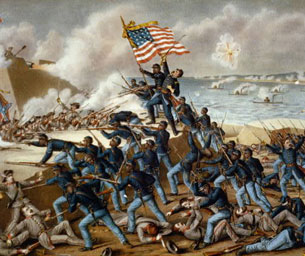The American Civil War
What was the war about?

North and the South America had many basic differences. The North was mainly a center for manufacturing and industry and the financial strength necessary for success. The South economy was based in agriculture, with cash crops of tobacco, cotton and sugarcane bringing in a large portion of the economic strength. The South depended greatly on the industry of the North. To their advantage the South held a majority of the slaves during this time, with more than 4 million enslaved men, women and children.
Conflict over issues of how much control the federal government should have over the states, industrialization, trade, and especially slavery had increased tension between Northern and Southern States. After Abraham Lincoln was elected president in 1860, 11 Southern States separated from the Union and set up an independent government, the Confederate States of America. These events led to the outbreak of the Civil War, a brutal, bloody, four-year conflict that left the South defeated and ended slavery at the cost of more than half a million lives.
The Civil War battle

The North held many advantages over the South during the Civil War. Its population was several times that of the South, a potential source for military enlistees and civilian manpower. The South lacked the substantial number of factories and industries of the North that produced needed war materials. The North had a better transportation network, mainly highways, canals, and railroads, which could be easily used to re-supply military forces in the field. At sea, the Union navy was more capable and dominant, while the army was better trained and better supplied. The rest of the world also recognized the United States as a legitimate government, allowing U.S. diplomats to obtain loans and other trade concessions.